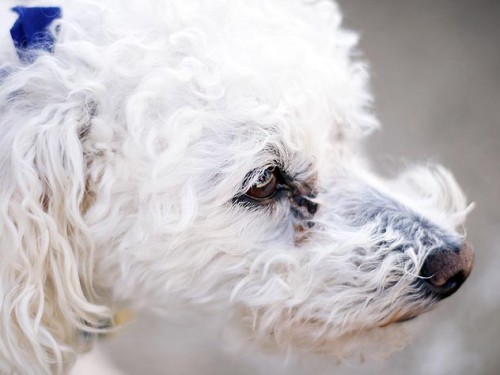Health Problems With American Eskimo Dog
Luxating Patella
One medical condition that occasionally affects American Eskimo dogs is patellar luxation. This applies to all of the size groups — toy, miniature and standard. Patellar luxation describes issues with the exact location of a canine’s kneecap. When dogs have luxating patellas, their kneecaps essentially spring out of the appropriate spot. Patellar luxation is prevalent in wee and big dogs alike. If you observe anything unusual in your American Eskimo’s back legs, set up a veterinarian appointment immediately, the sooner the better. You also might notice your pet making conspicuous hopping motions as he tries to move around. Orthopedic difficulties of the back legs in general are somewhat common in American Eskimo dogs, so pay attention for any signs of them.
Progressive Retinal Atrophy
Eye issues such as progressive retinal atrophy also can affect these nimble doggies. The genetic retinal ailment progresses gradually, and with time causes blindness. If a dog has progressive retinal atrophy, either his retina ceased normal growth at too early of a stage, or his photoreceptors deteriorated at an abnormally quick pace. Progressive retinal atrophy isn’t only common in the American Eskimo breed, but also in many others such as toy poodles, Australian cattle dogs, Siberian huskies and Irish setters. If you are concerned that your precious pooch might be experiencing eyesight problems, take him to the vet immediately.
Hip Dysplasia
Hip dysplasia is another orthopedic concern that American Eskimo dogs sometimes experience. Hip dysplasia, in a nutshell, is a genetic ailment that is characterized by a hip joint that simply developed in an abnormal fashion. This leads to looseness of the joint and ultimately excessive motion of the bone in the legs. Some key symptoms of hip dysplasia in pooches are rigidness, hobbling and reluctance to partake in physical exercise or walk on stairs. If you have any reason to suspect that your precious pet might be dealing with this painful issue, bring him to the vet as soon as possible.
Diabetes
Diabetes also sometimes affects American Eskimo dogs. If a doggie has diabetes, then his body either doesn’t make sufficient insulin or doesn’t react correctly to the hormone. Be alert to signs of diabetes in canines, such as excessive urination, hazy eyes, weight loss, throwing up, exhaustion, increased hunger, dehydration and inordinate thirst. Veterinary assistance is a must for any dog who has diabetes, so don’t wait around.
Robust Dogs in General
Despite these possible medical issues, American Eskimo dogs are, on the whole, fairly robust and tough dogs. With the right care, exercise and diet, they can live happily for anywhere between 12 and 17 years. Routine appointments with the veterinarian are a must, even if your pet seems to be in 100 percent glowing condition.
DIY Dog Tear Stain Remover
Thoroughly mix equal parts corn starch, milk of magnesia, and hydrogen peroxide to make a creamy paste. The amount you will need depends on the size of your dog, but about a teaspoon each should be enough to get you started.

Keep your dog’s head still, and let the paste stay on his fur for ten to twenty minutes, then wash it out thoroughly. You may want to condition the bleached fur after this process, as it may be brittle. You can repeat this process, as necessary, every couple of days until the stains are removed.
If you cannot easily keep your dog still for the ten to twenty minutes needed for the solution to work, do not risk this method as the solution could get in your dog’s eyes.





